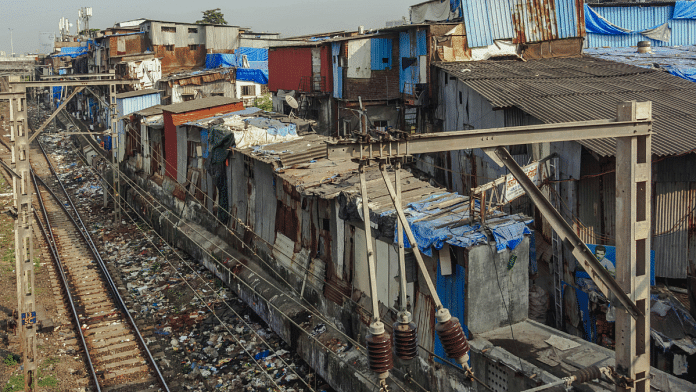Thank you dear subscribers, we are overwhelmed with your response.
Your Turn is a unique section from ThePrint featuring points of view from its subscribers. If you are a subscriber, have a point of view, please send it to us. If not, do subscribe here: https://theprint.in/subscribe/
One of the major discussions in developing countries is focused on alleviating poverty among the urban poor by reorienting the socio-economic structure of development programs. In India, it has been observed that average income levels in urban areas are generally lesser than their actual expenditure, highlighting the need to address urban poverty as well.
Poverty can be defined as a situation in which an individual lacks the material support necessary to sustain life or is in need of something valuable that contributes to fulfilling basic necessities. The state of poverty varies from region to region and from individual to individual. The term “poverty” indicates inequality and the extent to which an individual is deprived of basic needs essential for living.
The primary focus of economic policies should not only be on growth but also on ensuring that growth benefits all sections of society. Consequently, the central aim should be poverty eradication. At the very least, basic necessities, such as access to food, must be fulfilled for survival. Perceptions of the causes of poverty can vary from state to state, making it crucial to evaluate how the economy performs in providing basic needs to help citizens achieve minimum living standards.
According to the 2011 Census, India’s urban population increased from 17.29 percent in 1951 to 31.16 percent in 2011. During this period, the urban population grew sixfold, from 62 million to 377 million (Jha, 2020). A significant factor contributing to this transformation has been the migration of the rural poor to urban areas in search of better food, employment, and livelihood opportunities. By 2011, approximately 65.5 million Indians were residing in slums across various states (Jha, 2020).
The concept of urban poverty encompasses settlements in towns and villages. Common concerns for both rural and urban poverty include healthcare, food, education, and employment. The urban poor often live in inadequate and unauthorized slums, facing a lack of sanitation and proper infrastructure. There is a severe shortage of toilet facilities, especially for women, and limited access to clean air and water, which increases their vulnerability and exposure to crime. Survival becomes extremely challenging in such environments, impacting their ability to build social relationships.
The gap between the urban rich and poor is vast and continues to widen due to poverty. There is a critical need to address the disparities in society caused by poverty, along with its causes and consequences. Understanding these issues can help focus on effective solutions for poverty alleviation. Policies that are primarily rural-based may not be sufficient to eradicate poverty in urban areas. Therefore, anti-poverty strategies must consider urban policies, urban planning, infrastructure, and legal and institutional frameworks.
According to United Nations reports, by 2030, approximately 400 million people will be living in cities, leading to an anticipated rise in the overall number of slums in the coming years. Engagement from the government sector, the private sector, civil society, non-governmental organizations, and local communities is essential. A report from the United Nations Development Program indicates that about 8.8 percent of the population lives in multidimensional poverty, with an additional 19.3 percent vulnerable to it. The level of disposable income and expenditure among the urban poor falls short of what is needed to fulfill basic needs. For instance, according to NSSO data from 2011-12, the income in Vishakhapatnam, Andhra Pradesh, was 17326917 with an expenditure of 17764451. Similarly, in Agra, Uttar Pradesh, the income was 2786350 with an expenditure of 2875000. This indicates that income is less than expenditure, a factor that contributes to poverty.
While poverty estimates may not serve as an effective tool for poverty reduction, they can provide reasonable guidance for policy implementation. Poverty has multiple dimensions, including reduced income, malnutrition, illiteracy, lack of access to water and proper sanitation, mortality, decreased mobility, and vulnerability to economic shocks.
These pieces are being published as they have been received – they have not been edited/fact-checked by ThePrint.


